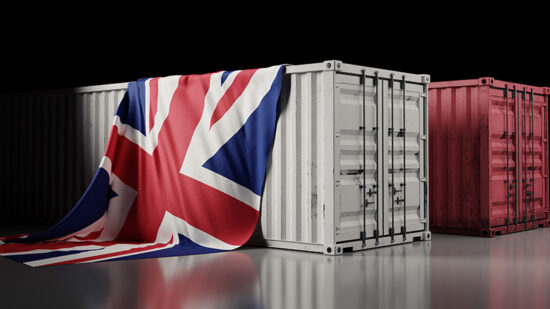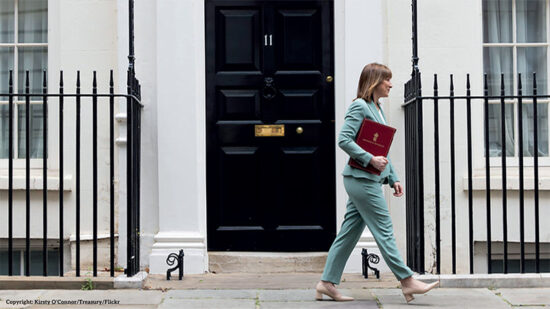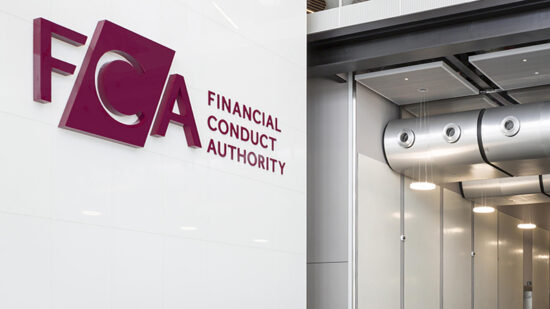Corporate bonds have not been immune to the volatility created by the US administration. Inevitably, tariffs have implications for corporate profitability and creditworthiness.
April saw a significant spike in credit spreads, and while they have dropped as tariff measures have reversed, they are still above recent highs.
Investors may have missed the point of maximum opportunity in corporate bonds, when spreads were at their widest, but the shake-out has thrown up some options for stockpicking fund managers in the sector. There has been a shuffling of the deck on valuations.
For example, USD-denominated debt had long traded at a premium to the rest of the world – another example of US exceptionalism – but this started to reverse. Equally, some areas where spreads looked abnormally tight, such as some of the cyclical areas, have started to reprice.
Jonathan Golan, manager of the Man Dynamic Income fund, pointed out that for the first time since 2022, USD-denominated investment grade bonds are trading at wider levels than their Euro equivalents, “underlining what has been a period of reduced US exceptionalism in 2025 so far”.
“Unsurprisingly, the US underperformed across the quality spectrum, while energy dragged performance from a sector perspective,” he added.
See also: UK investors cashed-out £3.94bn after being ‘caught up in market panic’
However, there are sound reasons for some of this reappraisal and it has certainly not been an indiscriminate buying opportunity. The new environment throws up some challenges for certain regions and sectors.
A US recession is now plausible and could take large chunks of the rest of the world with it. Any economic weakness brings problems for cyclical companies in exposed sectors, or for highly indebted companies.
Lloyd Harris, manager on the Premier Miton Monthly Income Bond fund, believes default rates are likely to rise: “Default rates crept up in 2024 in what was a very liquid year for issuance. This year has been fairly liquid too, but I think we can expect some more defaults in high yield and the default rate to creep up a little further.”
Equally, while the final shape of the tariff regime is unclear and Trump may be forced to row back, it is evident that tariffs will continue to be implemented in some form. That is likely to be inflationary, which creates vulnerability for longer-dated bonds.
Long-dated treasuries have been selling off, with the 30-year treasury yield tipping over the psychologically important 5% in late May. It is notable that short-dated bond funds have significantly outperformed their longer-dated peers within the IA Sterling Corporate Bond sector over the past year.
Harris said longer-dated corporate bonds are still exposed: “We are cautious on rates coming down, particularly at the longer end. The short end is anchored, and we can even see cuts in some countries, such as the UK, but for longer-dated bonds continued deglobalisation will weigh on yields. This is the point of most pain.”
The all-in yield for investment grade still looks attractive. In the IA Sterling Corporate Bond sector, yields of over 5% are not uncommon.
Nevertheless, while spreads are higher than the period from November to February when they looked abnormally low, they are relatively low compared to their longer-term history. This is also a reason for some caution.
Fund managers have been tiptoeing through this environment, adding selectively, but cautiously, where they see more attractive valuations. Golan said: “We have been adding particularly in the US, which has been an area where we have had a relatively light exposure coming into the sell-off.
“With US valuations starting to look better and volatility likely to be higher, our focus will remain on this part of the world. We have added quite broadly including an aircraft leasing company, gaming, energy services, healthcare and real estate across the US and Europe.
See also: PISCES private asset exchange gets FCA go-ahead
“To fund this, we have used some of the cash in our fund as well as selling some higher quality European credit that has held up very well.”
For Lloyd Harris of Premier Miton, investment grade bonds are still the sweet spot, with a preference for shorter-dated credit:
“The maths for shorter-dated investment grade credit is very compelling,” he said. “It’s difficult not to make an inflation-busting return when you look at the capital at risk versus the yields on offer in this part of the market. That’s where we’re focusing.”
On high yield, he is being “incredibly discerning”, adding “it’s not a big part of the risk we own at the moment. The portfolio ballast is the compounding of short-dated credit. It allows us to get to a nice place quite slowly, delivering a very solid and secure outcome.”
Jack Willis, co-manager on the Liontrust Sustainable Future Monthly Income Bond fund, also believes that demand for investment grade credit will remain secure and that many corporates are in a good place: “Given the circumstances, investors are looking for insulated assets in which to invest their capital,” he said. “While tariffs have the potential to temper earnings, many corporates are entering this uncertain period from a solid base, with many having termed out debt while interest rates were low.
“Corporate bonds have often outperformed in stagflationary environments, which is becoming ever more likely with each geopolitical development.”
The recent rout has created opportunities in corporate bonds, but stockpickers still need to exercise caution. The current environment creates risks in certain parts of the market, and valuations don’t necessarily reflect those risks.
Short-dated, higher-quality bonds remain the sweet spot for many managers, where they can pick up a high and sustainable yield, without too much exposure to the volatility emerging from the US.
Darius McDermott is managing director of FundCalibre
This story was written by our sister title, Portfolio Adviser








